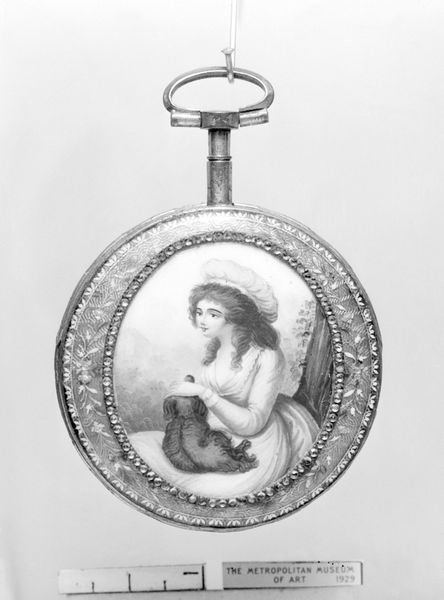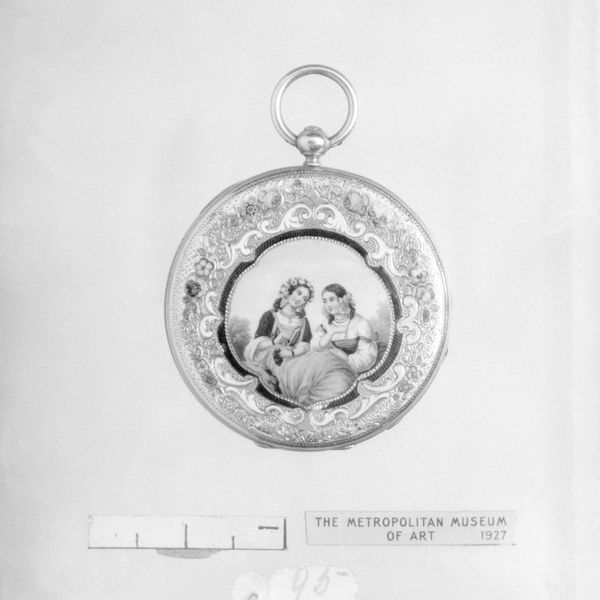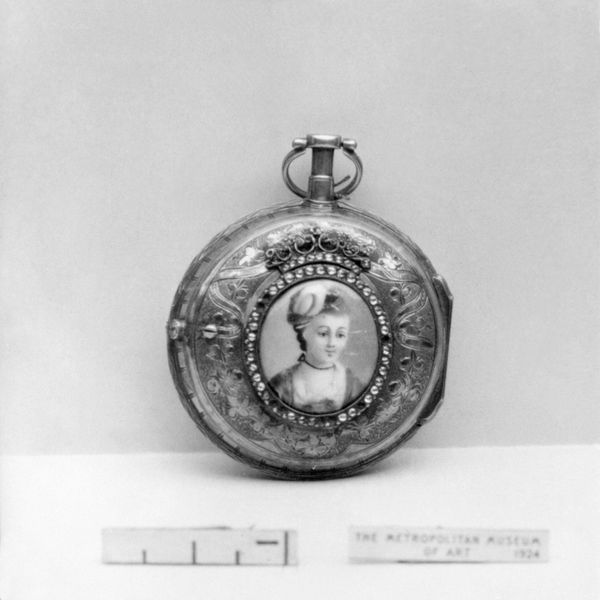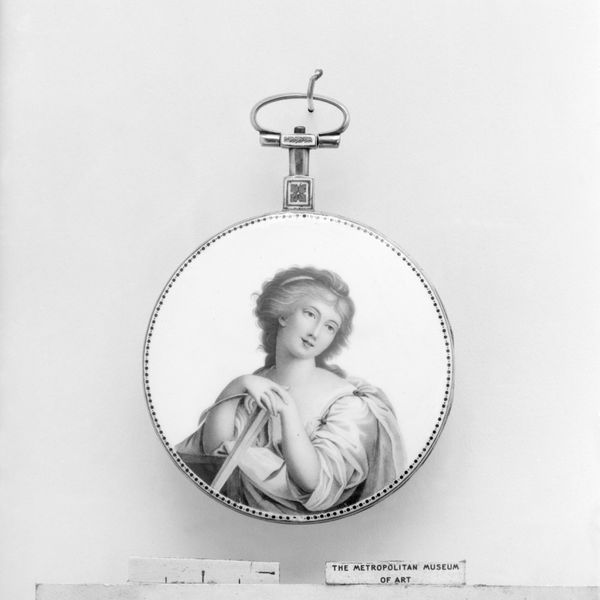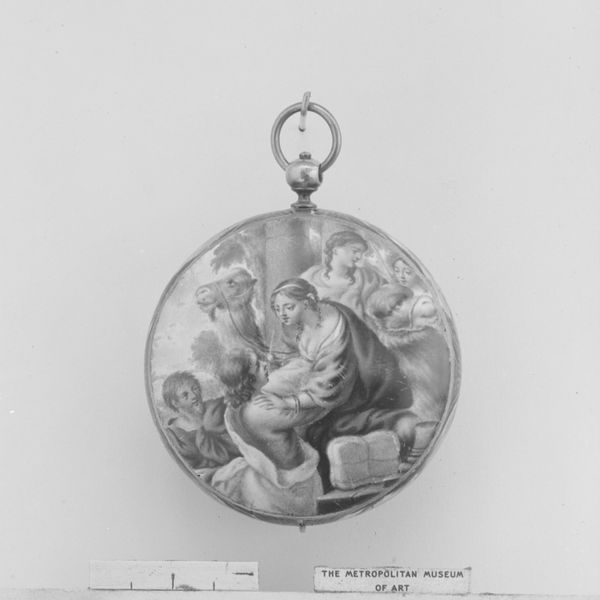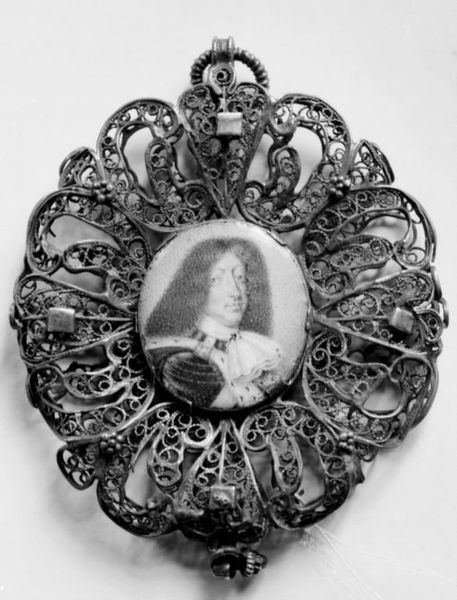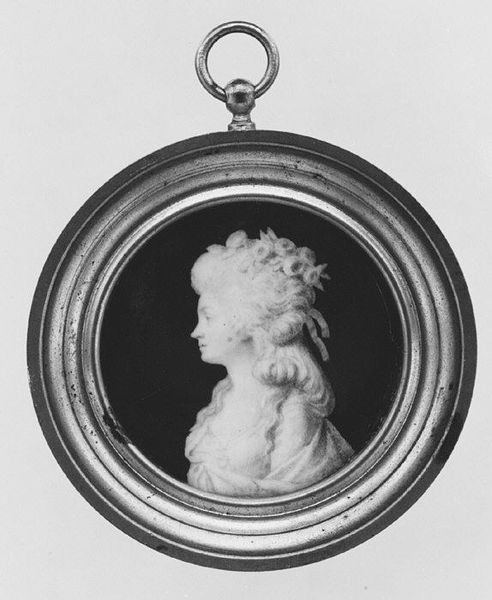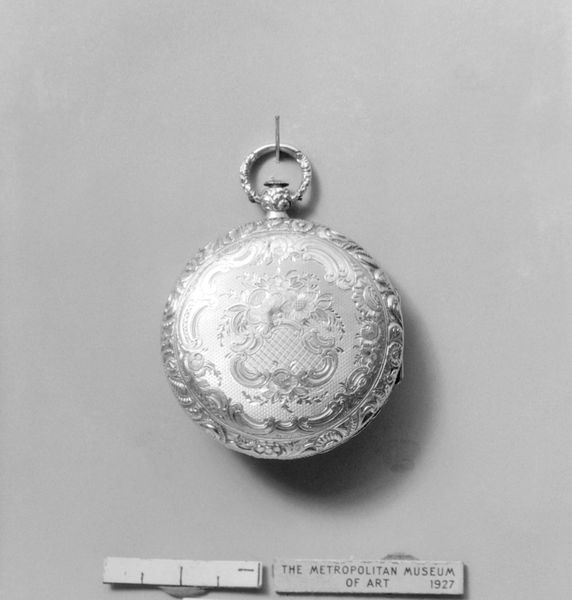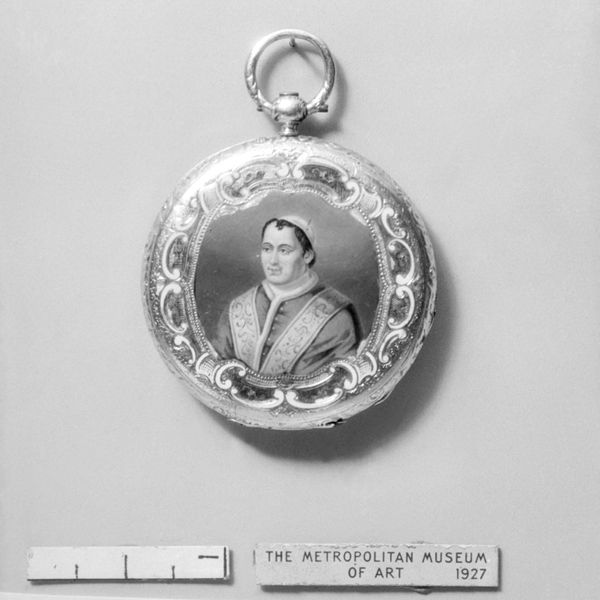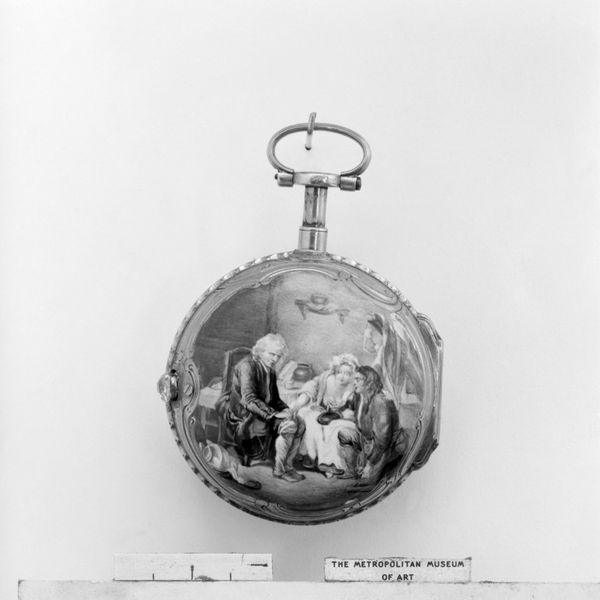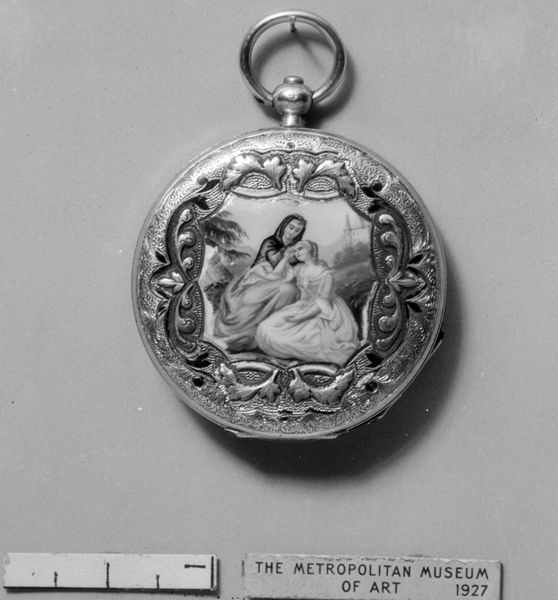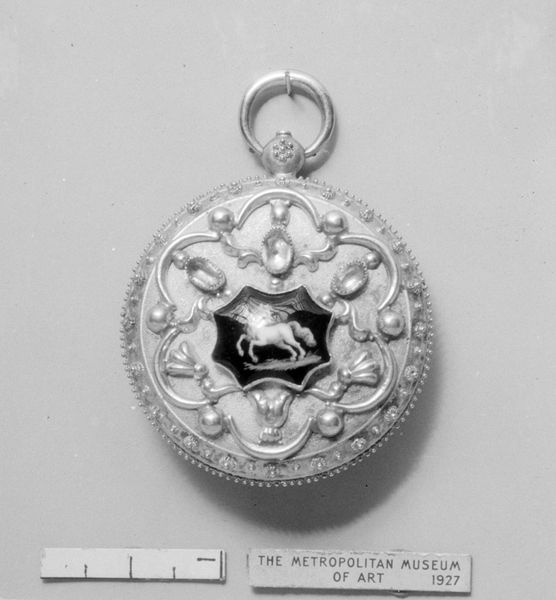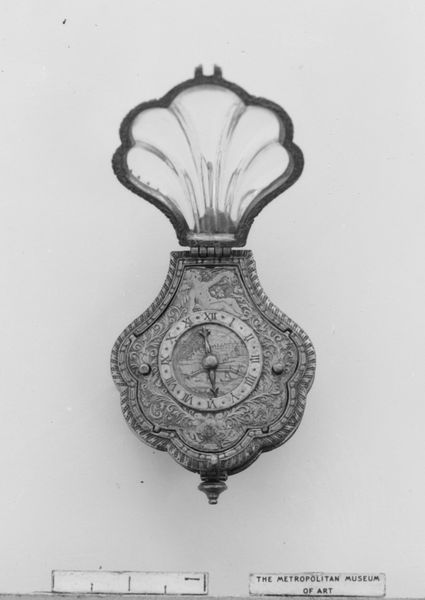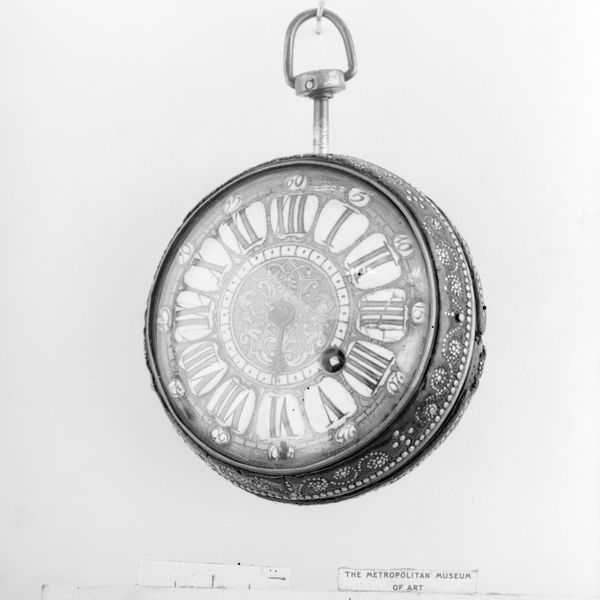
Dimensions: Diameter: 1 3/8 in. (3.5 cm)
Copyright: Public Domain
Curator: What strikes me immediately is the opulence – a real feast for the eyes. It seems almost impossibly detailed. Editor: Absolutely. It’s easy to get lost in that decorative trim of jewels encircling the portrait. This object, titled "Watch," dates from between 1780 and 1795 and is currently held in the collection of the Metropolitan Museum. What do you make of its construction? Curator: Well, as a historian, I see a powerful reflection of 18th-century social values. This isn’t just a timepiece; it’s a status symbol, a wearable emblem of wealth and refined taste. Miniature portraits, often set in jewelry or boxes, were intensely personal objects that circulated within elite circles. Editor: The making of such a piece speaks volumes about the labour involved, doesn't it? Think of the specialized skills: the watchmaker, the jeweler setting those stones, and, of course, the artist who painted that delicate tempera portrait on what I imagine must be a very small surface. We're looking at a confluence of artistry and artisanal production. Curator: Precisely. And consider the portrait itself. It’s not just any portrait. It evokes Rococo aesthetics—soft lines, delicate colors, a sense of playful elegance, conforming to the conventions of portraiture favored by the aristocracy and wealthy bourgeoisie of the time. This "Watch" demonstrates a fascinating blurring of lines between fine art, craft, and industrial production. Editor: Right, how do you think the depicted figure connects to all this ornamentation? Is she a real person, a muse or simply a fashionable face to adorn expensive material? Curator: Interesting question! The miniature likely depicts a specific woman, perhaps a member of the patron’s family or social circle. These portraits were intimate keepsakes. That the image is not secondary to its adornment but enhanced with jewels means this specific watch served to solidify the figure and owner's social status and romantic sentiment. Editor: I’m left thinking about value, not just monetary, but the time, skill, and material labor compressed into this tiny object. It’s a powerful statement on the economies of artistry. Curator: Indeed. It serves as a poignant reminder of the social and political structures underpinning the world of art.
Comments
No comments
Be the first to comment and join the conversation on the ultimate creative platform.
